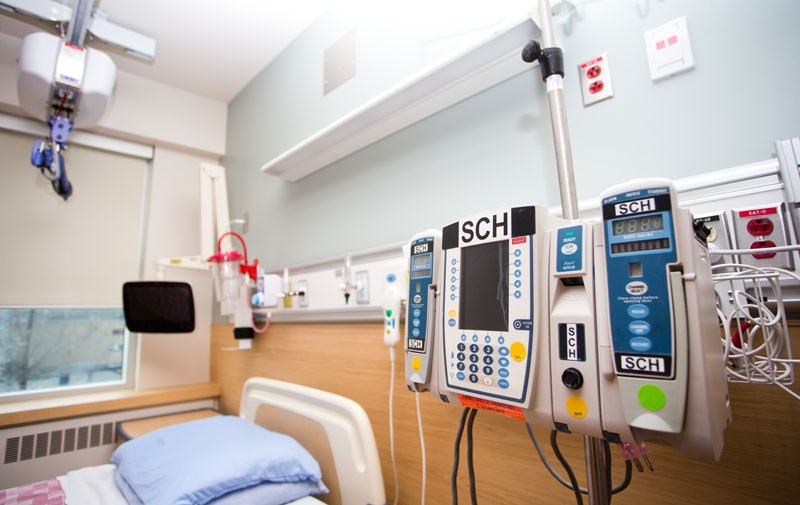Patients needing to be admitted to the hospital will have to spend a little less time amongst the coughing, sniffling masses.
The Sturgeon Community Hospital expanded its medicine program earlier this month with the addition of 14 new beds – a move patient care manager Shirley Baumgartner is hoping will reduce lengthy wait times in the emergency department.
“Hopefully this is going to help reduce some of our wait times and the number of admitted patients we have in emergency waiting for a bed. With more beds it increases our ability to move them faster,” said Baumgartner, adding that the true test will come with the arrival of the flu season.
The hospital has been dealing with overcapacity issues for a number of years.
According to Baumgartner, at any given time there are eight or more patients receiving care within the bustling emergency department – which sees approximately 50,000 visits per year – while waiting to access a hospital bed.
“We’re hoping with (these beds) we can stay in the single digits – down to six or eight,” she said.
In March it was reported that some patients were waiting up to 72 hours to be admitted to the hospital. Documents released by the Alberta NDP, before they formed the government, ranked the Sturgeon as having the longest wait times for in-patient beds in the province, with one in 10 patients waiting longer than 71.9 hours.
The target identified by Alberta Health Services is 8.2 hours. According to the latest 2016 numbers, the Sturgeon has shown some improvement in this area. The average length of time in the emergency department before admission into a hospital bed decreased to 19.9 hours from 27.9 in 2014-15.
The addition of these 14 new beds, as well as the opening of 12 long-term care beds and 10 hospice beds at Foyer Lacombe last week, should help further reduce wait times, said Wendy Tanaka-Collins, site director for the Sturgeon Community Hospital.
“(Patient) flow is not just based on number of beds. Flow is based on being able to help a patient be discharged home with homecare. It’s about long-term care beds being available to take that patient,” she said.
The Sturgeon aims for 95-per-cent occupancy of its medical in-patient beds, but according to Tanaka-Collins that’s rarely the case. “We’ve been typically running at least 98 to 100 per cent (occupancy).”
Tanaka-Collins noted that wait-time data is also influenced by the number of patients requiring isolation and the number of private rooms available at the time of the hospital visit.
The $2.8-million redevelopment of Unit 19, the hospital’s defunct pediatric wing, was funded by AHS. The Sturgeon Community Hospital Foundation raised an additional $500,000 for the purchase of new furnishings and equipment, such as televisions, beds and lifts.
“We keep hearing about how emergency is tied up with people needing acute care beds. There weren’t enough beds,” said Wally Monson, chair of the foundation. He hopes the contribution will help to alleviate pressure from the hospital’s hard-working staff.
The Sturgeon Community Hospital is phasing in the new beds while minor construction continues in the new unit. Currently six are available for use.
Once all 14 became available, the hospital’s medicine program capacity will increase to 89 beds.




